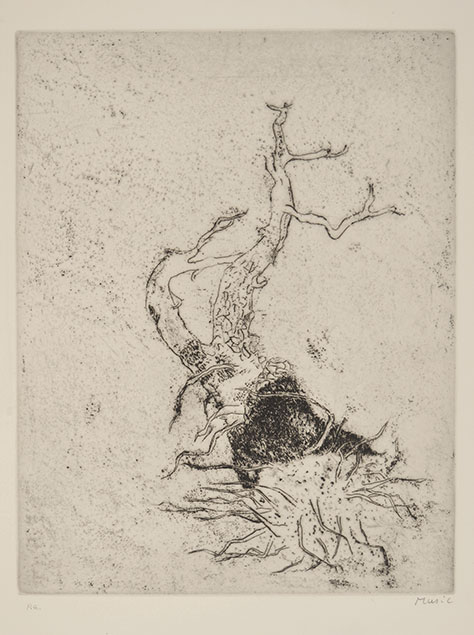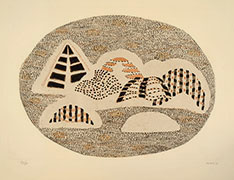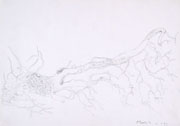(Gorizia 1909 - Venice 2005)
MOTIF VEGETAL, 1973
Etching, 1973. Published by Edizione Sipleda, Rome, 1985; printed in Paris by Lacourière et Frélaut on wove Rives paper.
Edition: 125 signed proofs, XII proofs and few E.A., as our impression, inscribed in pencil P.a. and signed Music. Full sheet, in very good condition.
To the platemark 445 x 347 mm, the sheet 662 x 506 mm.
See Denise Frélaut, Music. L'oeuvre imprime, 2010; no.212.
Anton Zoran Music was born in Gorizia. He enrolled at the Zagreb Academy of Fine Arts and began to draw the landscapes of Dalmatia, where he settled after a long tour of Spain. In 1944, Music was charged with collaboration with anti-german groups in Trieste and arrested by the gestapo. In Dachau where he was deported, he made drawings of the horrors he witnessed and himself lived through. The U.S. army liberated the camp in 1945; a sick man, Music, settled in Venice. In 1948, Music showed at the Venice biennale for the first time, and met Kokoschka, Tobey and Campigli, becoming a friend of the latter. In 1949, Music made his first dry-points, which he printed himself on the presses of the Academia. In 1955, he made his first etchings in the Lacourière workshop, an activity he regularly pursued from then on. He was awarded the Venice Biennale Graphic Art Prize in 1956. In 1959 Music settled in Paris. In 1962, Rolf Schmücking published the first complete catalogue of Music's graphic output from 1947 to 1961. Basle museum bought 26 of his drawings, of which 10 dating from 1945, the Dachau period. In 1970 he began to paint the we are not the last series on the concentration camp theme, which was shown at the Galerie de France, Munich and Brussels. Between 1976 and 1980, Music made drawings in Fontainebleau forest and in the Dolomites. In the early eighties Music painted the canale della Giudecca series, and the inside of cathedrals series. In 1990, the Kunstlerhaus in Klagenfurt showed the works belonging to the Music Foundation, established by the city concil.



